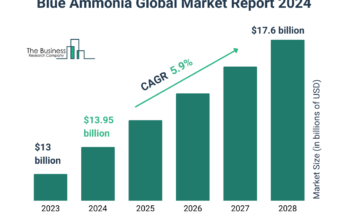The Radiation-Hardened Electronics Global Market Report 2024 by The Business Research Company provides market overview across 60+ geographies in the seven regions – Asia-Pacific, Western Europe, Eastern Europe, North America, South America, the Middle East, and Africa, encompassing 27 major global industries. The report presents a comprehensive analysis over a ten-year historic period (2010-2021) and extends its insights into a ten-year forecast period (2023-2033).
Learn More On The Radiation-Hardened Electronics Market:
According to The Business Research Company’s Radiation-Hardened Electronics Global Market Report 2024, The radiation-hardened electronics market size has grown steadily in recent years. It will grow from $1.68 billion in 2023 to $1.76 billion in 2024 at a compound annual growth rate (CAGR) of 4.3%. The growth in the historic period can be attributed to military and defense applications, nuclear industry requirements, high-altitude aerospace mission, medical and healthcare equipment, security and critical infrastructure.
The radiation-hardened electronics market size is expected to see steady growth in the next few years. It will grow to $2.09 billion in 2028 at a compound annual growth rate (CAGR) of 4.4%. The growth in the forecast period can be attributed to rise of autonomous vehicles, miniaturization and compact electronics demand, iot and connected devices in extreme environments, security and critical infrastructure growth, expansion in medical devices.. Major trends in the forecast period include space exploration and satellite technology, technological advancements, high-altitude aerospace applications, medical and healthcare equipment.
The increasing number of satellites is expected to propel the growth of the radiation-hardened electronics market going forward. A satellite is a tool that is launched into space to orbit the Earth and collect data. Rad-hard electronics can withstand extreme radiation and temperatures better than commercial-grade chips, which makes them suitable for space environments and are preferred to be used in satellites by space agencies, private spaceflight companies, and others. For instance, according to United Nations Office for Outer Space Affairs (UNOOSA) records, 8,261 satellites are orbiting the Earth now, of which only 4,852 satellites are active. Therefore, the increasing number of satellites is driving the growth of the radiation-hardened electronics market.
Get A Free Sample Of The Report (Includes Graphs And Tables):
https://www.thebusinessresearchcompany.com/sample.aspx?id=8634&type=smp
The radiation-hardened electronics market covered in this report is segmented –
1) By Product Type: Commercial-Off-The-Shelf (COTS), Custom Made
2) By Component: Power Management, Application Specific Integrated Circuit, Logic, Memory, Field-Programmable Gate Array, Other Components
3) By Manufacturing Technique: Rad-Hard By Process, Rad-Hard By Design, Rad-Hard By Software
4) By Application: Space Satellites, Commercial Satellites, Military, Aerospace and Defense, Nuclear Power Plants, Other Applications
Technological advancement is a key trend gaining popularity in the radiation-hardened electronics market. Major companies operating in the radiation-hardened electronics market are focused on advanced technologies to strengthen their position in the market. For instance, in July 2021, Renesas Electronics Corporation, a Japan-based semiconductor manufacturer, launched a brand-new series of radiation-hardened (rad-hard), plastic-packaged components for satellite power management systems. The ISL71001SLHM/SEHM point of load (POL) buck regulator, the ISL71610SLHM and ISL71710SLHM digital isolators, and the ISL73033SLHM 100V GaN FET and integrated low-side driver are the four new devices. These devices are all made with Giant Magneto Resistive (GMR) isolation technology, which offers better radiation tolerance than the currently available space-grade optocouplers. It combines high levels of assurance with the board area savings and cost benefits of plastic packing.
The radiation-hardened electronics market report table of contents includes:
1. Executive Summary
2. Radiation-Hardened Electronics Market Characteristics
3. Radiation-Hardened Electronics Market Trends And Strategies
4. Radiation-Hardened Electronics Market – Macro Economic Scenario
5. Global Radiation-Hardened Electronics Market Size and Growth
.
.
.
26. South America Radiation-Hardened Electronics Market
27. Brazil Radiation-Hardened Electronics Market
28. Middle East Radiation-Hardened Electronics Market
29. Africa Radiation-Hardened Electronics Market
30. Radiation-Hardened Electronics Market Competitive Landscape And Company Profiles
Top Major Players:
- Microchip Technology Inc
- BAE Systems Inc
- Renesas Electronics Corporation
- Infineon Technologies AG
- STMicroelectronics
Contact Us:
The Business Research Company
Europe: +44 207 1930 708
Asia: +91 88972 63534
Americas: +1 315 623 0293
Email: [email protected]
Follow Us On:
LinkedIn: https://in.linkedin.com/company/the-business-research-company
Twitter: https://twitter.com/tbrc_info
Facebook: https://www.facebook.com/TheBusinessResearchCompany
YouTube: https://www.youtube.com/channel/UC24_fI0rV8cR5DxlCpgmyFQ
Blog: https://blog.tbrc.info/
Healthcare Blog: https://healthcareresearchreports.com/
Global Market Model: https://www.thebusinessresearchcompany.com/global-market-model



